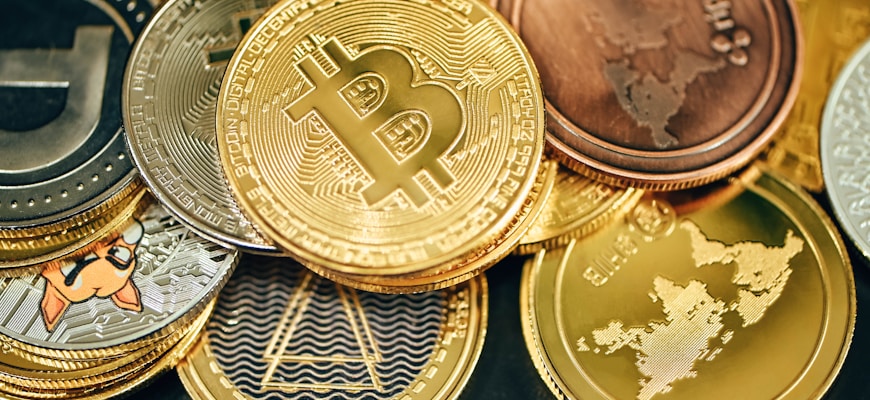Blockchain and the Internet of Things (IoT)

- Understanding the basics of Blockchain technology
- The potential impact of Blockchain on the Internet of Things (IoT)
- Exploring the intersection of Blockchain and IoT
- Challenges and opportunities in integrating Blockchain with IoT devices
- How Blockchain can enhance security in the IoT ecosystem
- Real-world applications of Blockchain technology in the Internet of Things
Understanding the basics of Blockchain technology
Blockchain technology is a decentralized, distributed ledger system that allows for the secure recording of transactions across a network of computers. Each transaction is recorded in a “block,” which is then linked to the previous block, forming a chain of blocks – hence the name “blockchain.”
One of the key features of blockchain technology is its ability to provide transparency and security. Each block contains a unique cryptographic hash that links it to the previous block, making it nearly impossible to alter the data without being detected. This ensures that the information stored on the blockchain is tamper-proof and secure.
Another important aspect of blockchain technology is its ability to eliminate the need for intermediaries in transactions. By using smart contracts, which are self-executing contracts with the terms of the agreement directly written into code, parties can transact directly with each other without the need for a trusted third party. This not only reduces costs but also speeds up the transaction process.
Blockchain technology has the potential to revolutionize various industries, including finance, supply chain management, healthcare, and more. Its decentralized nature, transparency, and security make it an ideal solution for a wide range of applications.
In summary, blockchain technology is a powerful tool that can provide transparency, security, and efficiency in transactions. By understanding the basics of blockchain technology, businesses can explore the potential benefits of integrating it into their operations and stay ahead in the rapidly evolving digital landscape.
The potential impact of Blockchain on the Internet of Things (IoT)
The potential impact of Blockchain on the Internet of Things (IoT) is immense. By leveraging the decentralized and secure nature of Blockchain technology, IoT devices can communicate, transact, and interact with each other in a more secure and efficient manner.
One of the key benefits of integrating Blockchain with the IoT ecosystem is enhanced security. The immutable and tamper-proof nature of Blockchain can help prevent unauthorized access, data breaches, and cyber attacks on Iot devices.
Moreover, Blockchain technology can also enable new business models and revenue streams for IoT deployments. Smart contracts, powered by Blockchain, can automate transactions, payments, and agreements between IoT devices, reducing the need for intermediaries and streamlining processes.
Exploring the intersection of Blockchain and IoT
The intersection of blockchain and the Internet of Things (IoT) represents a significant opportunity for innovation and advancement in various industries. By combining the decentralized and secure nature of blockchain technology with the vast network of interconnected devices in the IoT ecosystem, new possibilities emerge for improving efficiency, transparency, and security.
One of the key benefits of integrating blockchain with IoT is the ability to create a tamper-proof and transparent record of data transactions. This can be particularly valuable in industries such as supply chain management, where the provenance and authenticity of goods can be verified at every step of the journey. By leveraging blockchain technology, stakeholders can have increased confidence in the accuracy and integrity of the data being shared across the IoT network.
Another area where blockchain and IoT intersect is in the realm of smart contracts. These self-executing contracts can be programmed to automatically trigger actions or payments when certain conditions are met, without the need for intermediaries. This can streamline processes, reduce costs, and minimize the risk of fraud or errors in transactions.
Furthermore, the combination of blockchain and IoT can enhance cybersecurity measures by providing a more robust framework for securing sensitive data and communications. The decentralized nature of blockchain helps to prevent single points of failure and unauthorized access, while the IoT network can benefit from improved data encryption and authentication mechanisms.
Overall, the exploration of the intersection between blockchain and IoT holds great promise for revolutionizing how devices communicate, transact, and interact with each other. As more industries embrace these technologies and discover new use cases, the potential for innovation and disruption continues to grow.
Challenges and opportunities in integrating Blockchain with IoT devices
The integration of Blockchain with IoT devices presents both challenges and opportunities for the technological landscape. By combining these two innovative technologies, businesses can enhance security, transparency, and efficiency in their operations. However, this integration also comes with its own set of obstacles that need to be addressed.
One of the main challenges in integrating Blockchain with IoT devices is the scalability issue. The sheer volume of data generated by IoT devices can overwhelm the Blockchain network, potentially leading to slower transaction times and higher costs. Additionally, ensuring interoperability between Blockchain and IoT devices can prove to be a complex task.
On the other hand, the integration of Blockchain with IoT devices opens up a world of opportunities for businesses. By leveraging the immutability and transparency of Blockchain technology, companies can track and verify the data collected by IoT devices with a higher degree of trust. This can lead to improved supply chain management, enhanced cybersecurity, and streamlined business processes.
In conclusion, while there are challenges to overcome, the integration of Blockchain with IoT devices holds immense potential for revolutionizing the way businesses operate. By addressing scalability issues, ensuring interoperability, and leveraging the benefits of both technologies, organizations can unlock new opportunities for growth and innovation in the digital age.
How Blockchain can enhance security in the IoT ecosystem
Blockchain technology has the potential to significantly enhance security in the Internet of Things (IoT) ecosystem. By utilizing decentralized and tamper-proof ledgers, blockchain can help ensure the integrity and confidentiality of data transmitted between IoT devices. This is achieved through the use of cryptographic algorithms that create a secure and trustless environment for data exchange.
One key way in which blockchain enhances security in the IoT ecosystem is through the implementation of smart contracts. These self-executing contracts automatically enforce the terms of an agreement between parties without the need for intermediaries. In the context of IoT, smart contracts can help ensure that devices only interact with authorized counterparts, reducing the risk of unauthorized access or malicious attacks.
Furthermore, blockchain’s distributed nature makes it inherently resilient to single points of failure and cyber attacks. Each transaction is recorded on multiple nodes across the network, making it extremely difficult for malicious actors to alter data without detection. This distributed consensus mechanism enhances the overall security of the IoT ecosystem by providing a robust and transparent framework for data exchange.
Overall, the integration of blockchain technology into the IoT ecosystem holds great promise for improving security and trust among interconnected devices. By leveraging the unique features of blockchain, such as decentralization, encryption, and smart contracts, organizations can build a more secure and reliable infrastructure for the Internet of Things. This, in turn, can help accelerate the adoption of IoT technologies across various industries while mitigating the risks associated with data breaches and cyber threats.
Real-world applications of Blockchain technology in the Internet of Things
Blockchain technology has found numerous applications in the Internet of Things (IoT) ecosystem, providing secure and transparent data management for connected devices. Some real-world applications of blockchain in IoT include:
- Supply chain management: Blockchain can be used to create a tamper-proof record of every transaction and movement of goods throughout the supply chain. This ensures transparency and accountability, reducing the risk of fraud and counterfeit products.
- Smart energy grids: By using blockchain technology, energy producers and consumers can trade excess energy in a secure and decentralized manner. This can help optimize energy distribution, reduce costs, and promote sustainability.
- Asset tracking: Blockchain enables real-time tracking of assets such as vehicles, equipment, and inventory. This can improve efficiency, prevent loss or theft, and streamline logistics operations.
- Identity management: Blockchain can provide a secure and immutable digital identity for connected devices and users. This can enhance security, privacy, and trust in IoT ecosystems.
- Autonomous vehicles: Blockchain technology can facilitate secure communication and data exchange between autonomous vehicles, traffic infrastructure, and other vehicles on the road. This can improve safety, coordination, and efficiency in transportation systems.
These are just a few examples of how blockchain technology is revolutionizing the Internet of Things by enhancing security, transparency, and efficiency in various applications. As the IoT continues to grow and evolve, the integration of blockchain is expected to play a crucial role in shaping the future of connected devices and systems.
